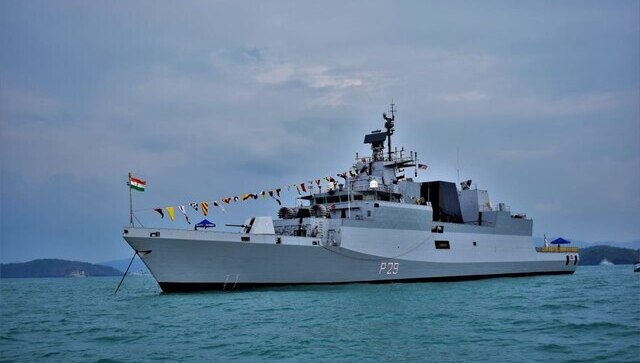In a noteworthy development, the Indian Navy has extended its military footprint in the South China Sea, marking a significant shift in regional dynamics.
INS Kadmatt’s ‘goodwill visit’ to Manila The INS Kadmatt, an Indian warship, recently docked in Manila, the capital of Philippines, on what has been described as a “goodwill visit”. This visit is not merely symbolic as the warship is set to participate in a military drill in the West Philippine Sea—a region currently facing heightened tensions. Tensions in the South China Sea The South China Sea has become a focal point of geopolitical tensions with China aggressively asserting its territorial claims and engaging in confrontations with neighbouring countries. Recent incidents involving Chinese warships ramming into other vessels and using water cannons have further exacerbated the situation leading to concerns about regional stability. India’s proactive stance in the South China Sea is evident through its military engagements and strategic partnerships in the region. The Indian envoy in Manila emphasised shared interests in peace and stability citing India’s commitment to maintaining a robust naval and maritime security presence. Military drills and collaborations India’s military involvement extends beyond Philippines with ongoing joint drills in Vietnam. A recent 11-day exercise in Hanoi, involving 45 Indian officers, aims to enhance inter-operability. This pattern of engagement is not new, as India initiated joint military exercises in the South China Sea four years ago, collaborating with Japan, Philippines and United States. The significance of these military exercises lies in India’s growing role as a regional power and security provider. Recent defence deals, such as the sale of BrahMos missiles to Philippines and Vietnam, underscore India’s commitment to enhancing the capabilities of its allies in the region. India’s active involvement in the South China Sea is motivated by its self-interest in ensuring freedom of navigation, protecting vital natural resources like oil and gas and maintaining security in the region. By bolstering its presence, India sends a clear message to China that it is committed to preventing any attempts to infringe on the territory of other nations. As India continues to strengthen its military ties and engagement in the South China Sea, it emerges as a key player in the efforts to maintain regional stability. Beyond geopolitical posturing, India’s strategic moves are driven by a desire to safeguard its economic interests, energy investments and maritime borders. The evolving dynamics in the South China Sea underscore the importance of diplomatic initiatives and collaborative efforts to mitigate the risk of conflict and ensure a secure and prosperous future for the region. Views expressed in the above piece are personal and solely that of the author. They do not necessarily reflect Firstpost’s views. Read all the Latest News , Trending News , Cricket News , Bollywood News , India News and Entertainment News here. Follow us on Facebook , Twitter and Instagram .
)